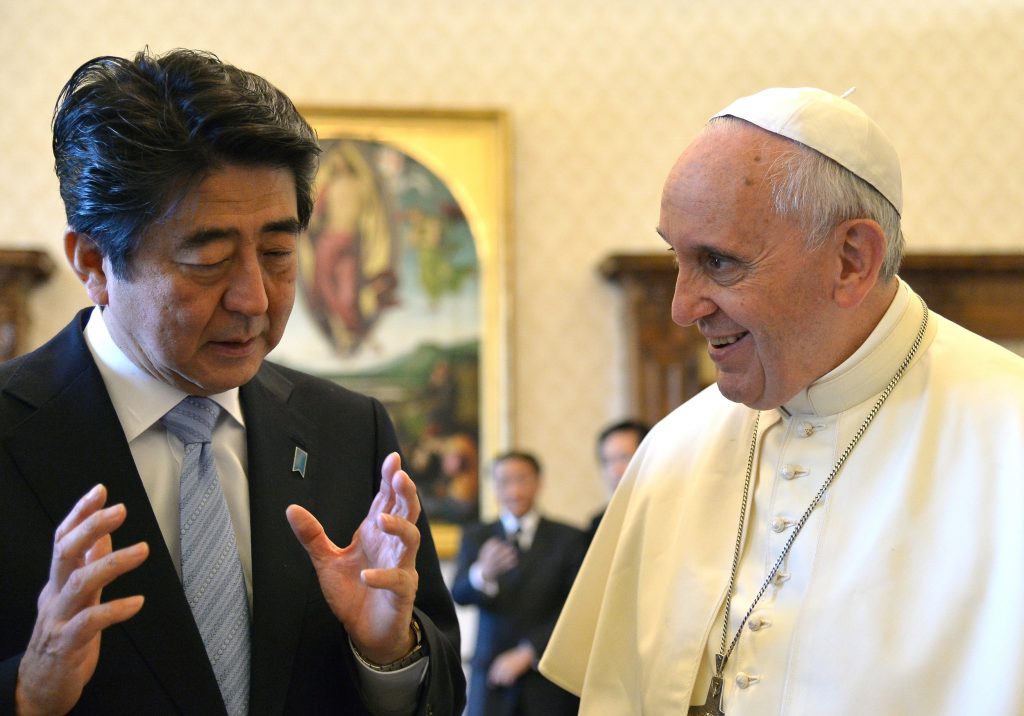
- ARAB NEWS
- 14 Jul 2025

Reuters, Vatican City
Pope Francis takes his mission to ban nuclear weapons this week to the only places where they were used in war, visiting the World War Two ground zeros of Hiroshima and Nagasaki as part of a tour of Japan and Thailand.
The seven-day trip, one of his longest and most distant, gives Francis an opportunity to support and encourage the tiny but well-respected Catholic communities, which make up less than 1% of the population in each country.
In fact, the Catholic populations of each country - 389,000 in Thailand and 536,000 in Japan - are smaller than crowds he has attracted at single events in other countries.
Francis, making the 32nd trip since he became pope in 2013, leaves on Tuesday for Thailand, where he arrives on Wednesday afternoon after an 11-1/2 hour flight to Bangkok.
In his three days there, he will meet the supreme patriarch of Thai Buddhists, Somdet Phra Maha Muniwong, who at 91 is nearly a decade older than the pope, and King Maha Vajiralongkorn, 67.
While in Thailand, he is expected to address the scourge of sex tourism and human trafficking.
The number of human trafficking victims rescued in Thailand is set to hit a record high this year, with demand for cheap labour in neighbouring Malaysia causing a jump in the illegal trade, according to government data.
In an unprecedented personal note, the Argentine pope's translator from Spanish to Thai will be his cousin. Sister Ana Rosa Sivori is a nun who has worked as a missionary in Thailand for more than 50 years.
A total ban on nuclear weapons
After four days in Thailand, Francis moves on to Japan, where international and domestic politics will loom large, particularly on Nov. 24, when he visits Hiroshima and Nagasaki.
About 400,000 people were killed, either instantly or from radiation illness or injuries resulting from the atomic bombs that the United States dropped on Hiroshima on Aug. 6, 1945 and on Nagasaki three days later as it sought to end World War Two.
Francis wants a total ban on nuclear weapons, going further than his predecessors when he said in 2017 that countries should not stockpile them even for the purpose of deterrence.
This stance was criticized by conservatives within and outside the Catholic Church who say deterrence had worked for 75 years.
Japan stresses its unique status as the only nation to have suffered atomic attacks and advocates disarmament, but nonetheless relies on the U.S. nuclear umbrella as an extended deterrent.
Francis will meet blast survivors, pray, and read a major "message on nuclear weapons" at the bomb epicentre in Nagasaki. He later visits Peace Memorial Park in Hiroshima.
Nuclear energy will also feature in the trip when the pope meets victims of Japan's "triple disaster," the 2011 earthquake that triggered a tsunami that in turn caused a meltdown at the Fukushima power plant. Radiation forced 160,000 people to flee and thousands will never return.
Following the Fukushima disaster, Japan's Catholic Bishops Conference issued a document calling for the abolition of nuclear power generation.
They also oppose Prime Minister Shinzo Abe's moves to revise Japan's post-war pacifist constitution.
Francis, who as a young priest wanted to be a missionary in Japan, will also meet with some of a dwindling number of Japan’s "Hidden Christians", descendants of those who preserved their faith in secret during centuries of persecution.
Jesuits brought Christianity to Japan in 1549, but it was banned in 1614. Missionaries were expelled and the faithful were forced to choose between martyrdom or hiding their religion. The ban was lifted in 1873.